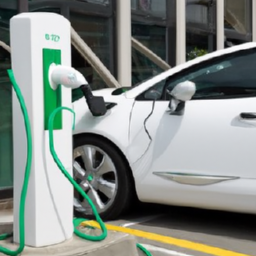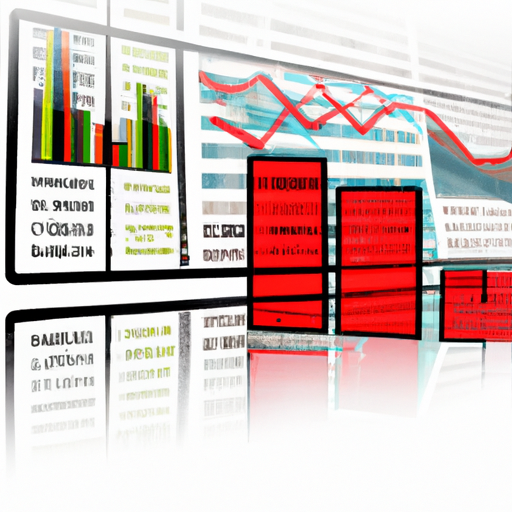Automotive Industry Trends 2023
So, you’ve probably wondered what the future holds for the automotive industry, right? Well, buckle up because we’re about to take a peek into the crystal ball and give you a snapshot of the top automotive industry trends for 2023. From the rise of electric vehicles and autonomous technologies to the integration of artificial intelligence and smart mobility solutions, the automotive landscape is set for some major transformations. Get ready to explore how these trends will shape the way we drive, commute, and interact with vehicles in the not-so-distant future. Exciting times ahead!
Table of Contents
Electric Vehicles
Electric vehicles have been gaining increased adoption worldwide in recent years. More and more consumers are recognizing the benefits of owning an electric vehicle (EV), from lower fuel costs to reduced carbon emissions. Advancements in battery technology have played a significant role in the growing popularity of EVs. Manufacturers have been investing heavily in developing batteries with higher energy density, longer range, and faster charging capabilities. This has addressed the concerns of range anxiety and made EVs a more practical option for everyday use.
Furthermore, the expansion of charging infrastructure has been crucial in supporting the widespread adoption of EVs. Governments and private companies are investing in the development of more charging stations, both at homes and in public places, to ensure convenience for EV owners. The availability of charging infrastructure has significantly alleviated concerns about running out of power, making EVs a viable alternative to traditional internal combustion engine vehicles.
Autonomous Vehicles
The automotive industry has witnessed rapid development in autonomous technology, bringing self-driving cars closer to reality. Companies like Tesla, Waymo, and Uber have been at the forefront of this revolution, investing in research and development to make autonomous vehicles a safe and reliable mode of transportation.
One of the key technological advancements driving the progress in autonomous vehicles is the integration of artificial intelligence (AI) and machine learning. These technologies enable self-driving cars to analyze vast amounts of data and make real-time decisions based on the surroundings. AI systems can identify objects, pedestrians, and other vehicles, and adjust the vehicle’s behavior accordingly. This has paved the way for more advanced autonomous features and increased confidence in the safety of self-driving cars.
However, the implementation of autonomous vehicles is not without its challenges. There is a need for legislation and regulations to govern the usage and operation of autonomous vehicles to ensure safety and accountability. Governments around the world are actively working on establishing guidelines and regulations for autonomous vehicles, addressing concerns related to liability, cybersecurity, and ethical considerations.
Connected Cars
Connectivity and the Internet of Things (IoT) are reshaping the automotive industry, leading to the emergence of connected cars. Vehicle manufacturers are increasingly focusing on integrating technologies that enable cars to communicate with each other and the surrounding infrastructure. This connectivity opens up a world of possibilities, enhancing safety and convenience features in cars.
With advancements in vehicle-to-vehicle communication, cars can exchange real-time information about road conditions, traffic patterns, and potential hazards. This enables vehicles to make intelligent decisions, such as adjusting speed or changing lanes to avoid accidents. Connected cars also offer enhanced entertainment and infotainment options, with features like streaming music, voice commands, and smartphone integration.
Moreover, the rise of connected cars has paved the way for enhanced safety features. Cars equipped with sensors and cameras can detect potential collisions and automatically apply brakes or steer away to prevent accidents. Additionally, connectivity allows for remote diagnostics, ensuring timely identification of vehicle issues and reducing maintenance costs.
Shared Mobility
The automotive industry has witnessed a significant shift towards shared mobility in recent years. The rise of ride-sharing and car-sharing services, such as Uber, Lyft, and Zipcar, has transformed the way people think about transportation. With shared mobility, individuals can rent or share a car for a specific period, eliminating the need for car ownership.
This trend is further fueled by the increasing use of mobility-as-a-service (MaaS) platforms, which provide integrated transportation services through a single app. MaaS platforms allow users to plan, book, and pay for various modes of transportation, including public transportation, ride-sharing, and bike-sharing. This shift towards shared mobility not only reduces congestion and greenhouse gas emissions but also provides cost savings for individuals who no longer need to bear the expenses associated with car ownership.
However, it is important to note that shared mobility does not completely eliminate the need for personal vehicles. There is still a demand for private cars in certain situations, such as commuting to work or traveling to remote areas. Therefore, the automotive industry is witnessing a transition towards ownership models that allow individuals to have the benefits of car ownership while still being able to access shared mobility services.
Sustainability and Environmental Consciousness
The automotive industry is undergoing a significant transformation towards greener and more sustainable practices. With increasing concerns about climate change and environmental impact, manufacturers are focusing on reducing their carbon footprint and adopting greener manufacturing processes.
One of the key areas of focus is the transition towards greener manufacturing processes. Automotive companies are increasingly investing in renewable energy sources to power their manufacturing facilities. Solar energy, wind energy, and other forms of renewable energy are being utilized to reduce reliance on fossil fuels and decrease carbon emissions during the production process.
Another area of innovation is the development of renewable energy solutions for vehicles themselves. Electric vehicles are powered by electricity, which can be generated from renewable sources such as solar and wind. The advancements in battery technology have made it possible to store and utilize renewable energy efficiently, further reducing the environmental impact of transportation.
To encourage sustainability in the automotive industry, governments around the world have implemented various initiatives and regulations. This includes offering incentives for purchasing electric vehicles, setting targets for reducing carbon emissions, and promoting the development of renewable energy infrastructure.
Digitalization and AI
Digitalization and artificial intelligence (AI) are reshaping the automotive industry, with significant implications for user experience and vehicle performance. AI and machine learning algorithms are being integrated into automotive systems to enhance safety, efficiency, and convenience.
One of the key areas where AI is making an impact is in the development of enhanced user interfaces and infotainment systems. Voice recognition, natural language processing, and gesture controls enable users to interact with their vehicles in a more intuitive and personalized way. This includes features like hands-free calling, voice-activated navigation, and personalized entertainment options.
AI also plays a crucial role in predictive maintenance and analytics. Vehicles equipped with sensors and connectivity can collect real-time data about their performance, allowing AI systems to analyze this data and predict potential issues before they occur. This enables proactive maintenance and reduces downtime, improving efficiency and minimizing repair costs.
Furthermore, AI algorithms are being leveraged to improve vehicle performance and efficiency. AI-based systems can optimize engine performance, adjust suspension settings, and personalize driving experiences based on individual preferences. This leads to a more comfortable and enjoyable driving experience while also reducing fuel consumption and emissions.
Shift towards Online Sales and Services
The automotive industry is experiencing a growing shift towards online sales and services, driven by the increasing influence of the digital era. Online car sales platforms have gained popularity, allowing consumers to browse and purchase vehicles from the comfort of their homes. These platforms provide detailed information about vehicles, including specifications, prices, and customer reviews, facilitating informed decision-making.
In addition to online car sales, digitalization has also transformed car financing and insurance processes. Consumers can now apply for car loans and insurance online, with streamlined processes that eliminate paperwork and reduce processing time. This improves convenience and accessibility for consumers while also reducing administrative costs for financial institutions and insurance companies.
Furthermore, the automotive industry has seen the expansion of online service booking and maintenance platforms. Car owners can schedule service appointments, request maintenance, or even receive remote diagnostics through these platforms. This enables efficient and convenient servicing, ensuring that vehicles are well-maintained and operate at their optimal performance.
Advanced Safety and Driver Assistance Systems
The emergence of advanced driver-assistance systems (ADAS) has revolutionized vehicle safety by integrating various technologies to support drivers and prevent accidents. ADAS features include lane departure warning, adaptive cruise control, automatic emergency braking, and blind-spot detection, among others.
These advanced safety systems utilize sensors, cameras, and AI algorithms to monitor the surrounding environment and assist the driver in real-time. For example, lane departure warning systems can detect when a vehicle is drifting out of its lane and provide visual or auditory alerts to the driver. Similarly, blind-spot detection systems use sensors to detect vehicles in the blind spot and issue warnings to prevent lane-change collisions.
Another area of development is collision avoidance technologies. Vehicles equipped with collision avoidance systems can detect potential collisions and intervene by automatically applying brakes or adjusting the steering to avoid accidents. This not only enhances safety for both drivers and pedestrians but also reduces the severity of accidents when collisions are unavoidable.
Additionally, biometric driver monitoring systems are gaining prominence in advanced safety and driver assistance. These systems use facial recognition or fingerprint scanning to verify the identity of the driver and assess their physical condition and attentiveness. By monitoring factors like eye movement, facial expressions, and heart rate, these systems can detect signs of drowsiness, distraction, or impairment, and issue alerts or intervene if necessary.
Augmented Reality in Automotive
Augmented reality (AR) is revolutionizing the automotive industry by enhancing vehicle displays, interfaces, and maintenance processes. AR technology superimposes digital information and graphics onto the real-world view, providing drivers with contextual information and improving their situational awareness.
One of the key applications of AR in the automotive industry is in vehicle displays and interfaces. AR can project information onto the windshield or heads-up display, enabling drivers to see relevant information, such as navigation instructions, speed limits, and traffic signs, without taking their eyes off the road. This enhances safety by reducing the need for drivers to divert their attention to a separate display or navigation system.
AR also has the potential to improve navigation and driving assistance. By overlaying digital directions and real-time traffic information onto the road, AR can provide drivers with intuitive and context-aware navigation guidance. Furthermore, AR can enhance driving assistance features by superimposing warnings and alerts onto the real-world view, making them more noticeable and easy to understand.
Moreover, AR-based maintenance and troubleshooting can significantly improve the efficiency and accuracy of vehicle servicing. Technicians can wear AR glasses or use handheld devices that superimpose instructions and data onto the physical parts of the vehicle. This enables easier identification of components, step-by-step instructions for repairs, and real-time access to manuals and documentation, reducing the time required for maintenance and troubleshooting.
Shifting Consumer Preferences
Consumer preferences in the automotive industry are continuously evolving, influenced by various factors such as technological advancements, changing lifestyles, and environmental awareness. Three key trends in consumer preferences have emerged in recent years: demand for eco-friendly and sustainable vehicles, preference for luxury and premium features, and increased interest in electric and autonomous technologies.
There is a growing demand for eco-friendly and sustainable vehicles as consumers become more conscious of their environmental impact. Electric vehicles, with their zero-emission nature, have gained popularity among environmentally conscious consumers. The increased availability and advancements in EV technology have made these vehicles more appealing from both an environmental and cost-saving perspective.
Another shift in consumer preferences is towards luxury and premium features in vehicles. Consumers are willing to invest in high-end features such as advanced infotainment systems, premium audio systems, leather upholstery, and advanced safety features. The desire for luxurious experiences and personalized comfort has driven the demand for luxury vehicles across different segments.
Furthermore, there is a heightened interest among consumers in electric and autonomous technologies. As EVs become more mainstream, consumers are increasingly willing to explore electric options, driven by factors such as long-term cost savings, environmental consciousness, and government incentives. Similarly, the prospect of autonomous vehicles promises increased safety, convenience, and productivity, generating curiosity and interest among consumers.
In conclusion, the automotive industry is experiencing significant transformations driven by technological advancements and evolving consumer preferences. The increased adoption of electric vehicles, advancements in autonomous technology, and the growing focus on connectivity and IoT in vehicles are revolutionizing the industry. Furthermore, the emphasis on sustainability and environmental consciousness, digitalization and AI, online sales and services, advanced safety systems, augmented reality, and shifting consumer preferences are shaping the future of the automotive industry. These trends are likely to continue shaping the industry in the years to come, making vehicles safer, more sustainable, and more connected than ever before.






